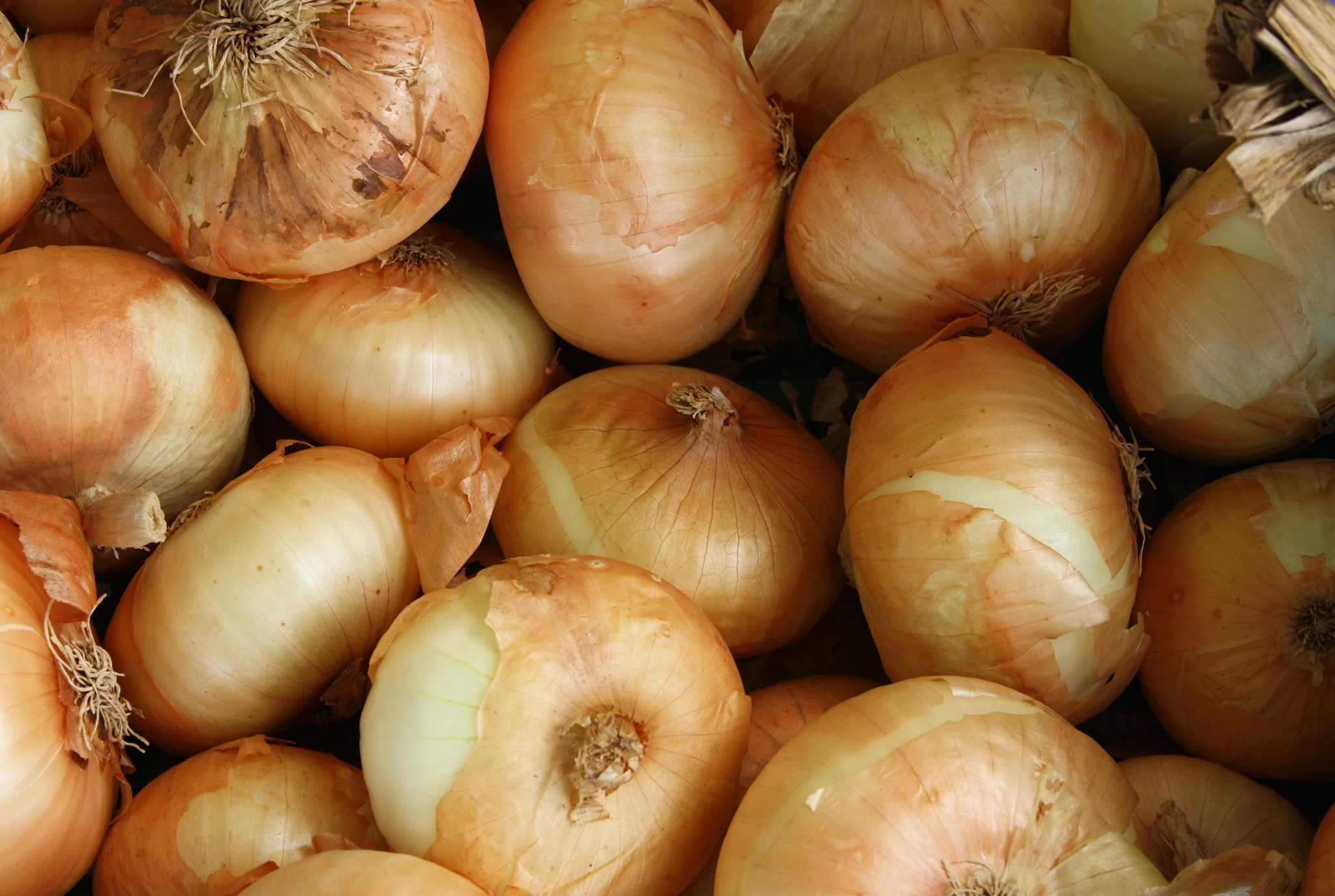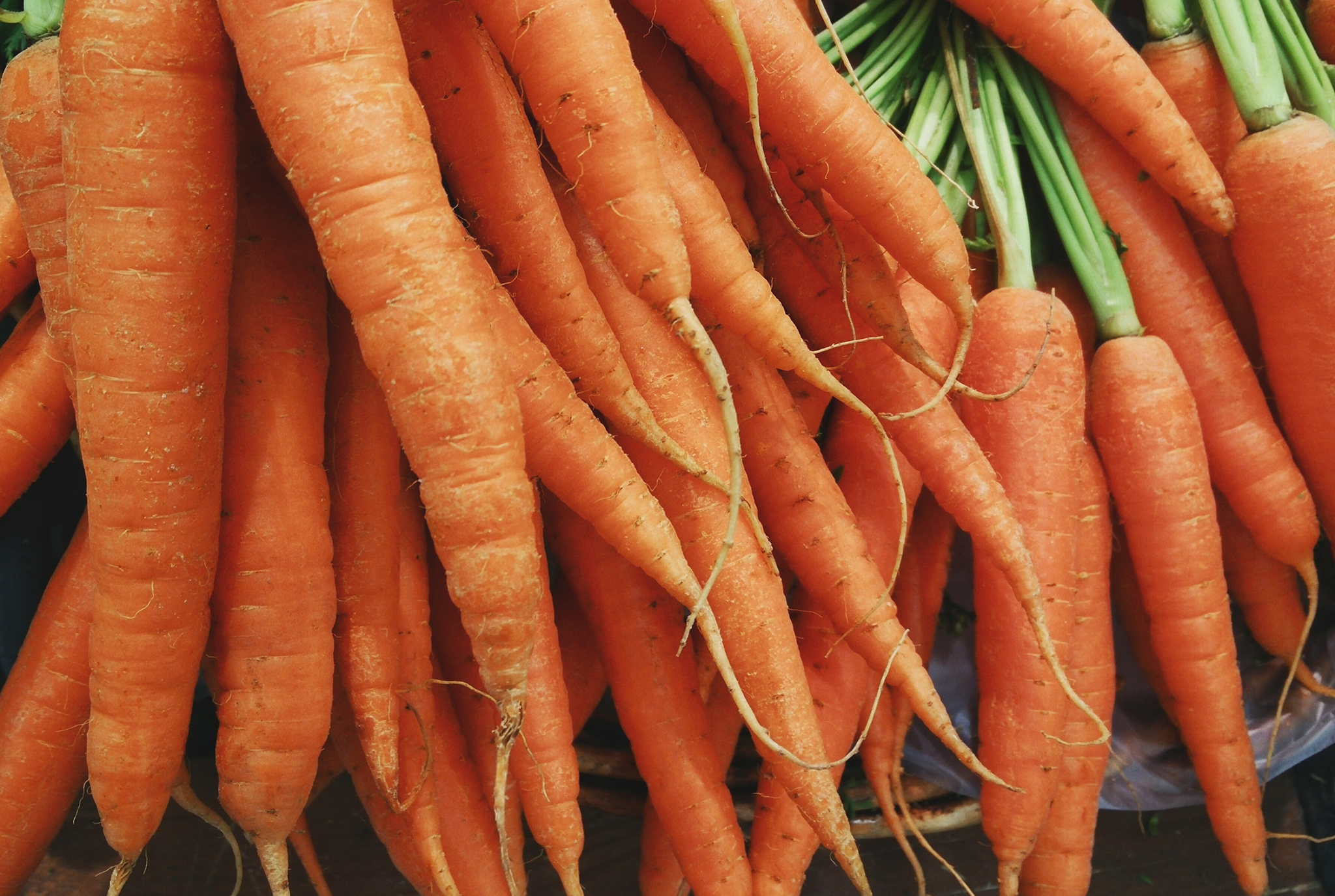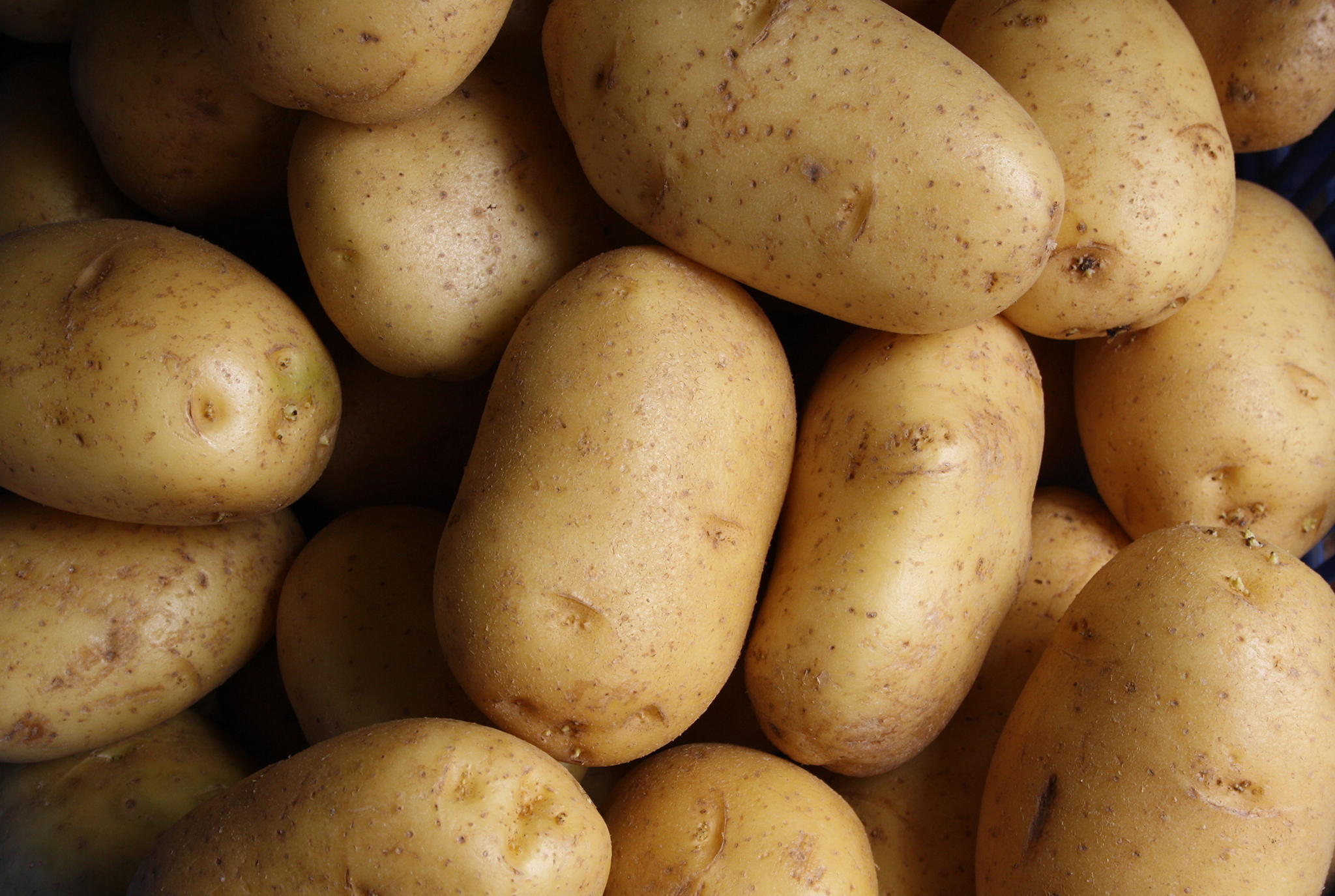Vegetable Origins
By Paul James
When you sit down to eat, do you ever wonder where the carrots or broccoli or tomatoes on your plate actually came from? Well of course they came from a farm, but that’s not what I’m talking about. I’m talking about where they came from originally and the paths they took to ultimately wind up here. And along the way, who in the world figured out what was edible and what wasn’t?
Ancient hunter-gatherers were the first to experiment with eating plants – leaves, stalks, roots, whatever. It’s certain that not every taste test was successful, and that some were downright fatal. But thankfully, plants that are poisonous typically contain alkaloids that are quite bitter, and that’s one of the ways the hunter-gatherers learned to select what to eat and what not to eat. But still, you gotta wonder how many people croaked when they saw deadly nightshade or water hemlock and thought it might go well with roasted saber-tooth tiger or grilled mastodon.
As for food origins, it turns out we know a great deal about where vegetables came from thanks to ancient texts and archaeological digs. But there’s still a good deal we don’t know.
Take peas, for example. Modern botanists are convinced that peas have their roots in a region extending from the Mediterranean eastward to central Asia. But the only archeological evidence we have of peas is from a cave in Thailand dating back to 9750 B.C. Radishes probably originated just east of the Mediterranean in western Asia, but since so many wild varieties exist even today, it’s hard to pinpoint exactly where they came from originally.
So I’ve chosen to focus on a few vegetables about which we know quite a bit in terms of where they came from and how they got to this country.

Onion – Allium cepa
Onions are arguably the oldest of the vegetables we eat. The earliest known reference is a Sumerian cuneiform tablet from around 2400 B.C., but they were likely cultivated a century or more before in central Asia.
Onions are immortalized in an inscription at the Great Pyramid at Giza, where laborers were fed onions, radishes, and garlic with every meal. They were also used in the mummification process.
Greeks and Romans also enjoyed onions. In Nero’s Rome, gladiators were massaged with onion juice before entering the arena to keep their bodies firm. And like tomatoes (more on them in a moment), onions were considered powerful aphrodisiacs. A basket of onions was recovered from the ruins of Pompeii in, of all places, the town’s biggest brothel.
By Elizabethan times, onions were being eaten pretty much the world over. They spread rapidly because they kept well in storage.
The domesticated, globe-shaped yellow onions, first cultivated extensively in Spain, came to America on the Mayflower, although wild onions had been growing here long before the settlers arrived. They were an instant hit, however, and were eaten in every way imaginable – roasted, boiled, pickled…even raw. George Washington grew onions, and described them as “the most favored food that grows.”

Carrot – Daucus carota
The first carrot wasn’t orange. It was purple. And it was hardly the plump, uniform shape we enjoy today. In fact, carrots were gnarly, misshapen, and scrawny. However, they were edible, and in ancient Afghanistan, home of the original carrot, they provided sustenance.
By the time carrots reached ancient Greece and Rome, and thanks to natural selection, they were larger and fleshier, but they were still highly branched.
The familiar conical root we know today showed up in the 10th or 11th century in Asia Minor, and arrived in Spain in the 12th century by way of the marauding Moors. By that time, thanks to a pigment known as anthocyanin, there were purple, violet, red, and even black carrots. A pale yellow carrot arrived on the scene 400 years later. But even in the 16th century, there were no orange carrots.
Finally, in the 17th century, a Dutch carrot breeder came across an orange carrot, and the orange carrots we eat today are direct descendants of that 400-year-old discovery.
The carrot arrived in North America with the first settlers of Jamestown. It was popular from day one, although so many people planted them in subsequent years that the domesticated carrot escaped into the wild and reverted to its original form – the weed known as Queen Anne’s lace.

Cabbage (Broccoli and Cauliflower)
Cabbage has been around for thousands of years. The Greeks ate lots of it, and the Romans absolutely loved it. To them, it was a vegetable of status. Its original wild ancestor was a seaside dweller, native to the Mediterranean, which over thousands of years would spawn kale, collards, heading cabbage, kohlrabi, broccoli, cauliflower, and Brussels sprouts.
Heading cabbage didn’t arrive on the scene until around the time Julius Caesar invaded Britain. The Brits took a liking to it, and by the 16th century they were growing at least 16 different varieties, both red and green.
Cabbage arrived in the colonies by way of Canada, actually, and the response was enthusiastic. Thomas Jefferson wrote glowingly of his cabbages, especially the Savoy types.
Both broccoli and cauliflower are edible modifications of the cabbage flower, although botanists can’t agree on which came first. We know broccoli was also around in ancient Rome, but it’s hard to say precisely when. Regardless, it wasn’t as popular as cabbage.
Cauliflower, on the other hand, gained wider acceptance from the start, although it’s hard to say when that was either. There are references to it being eaten in 12th century Syria, however. Cauliflower is considered to be the most intellectual of the cabbage relatives, although Mark Twain dismissed it as “nothing more than cabbage with a college education.”

Spinach – Spinacia oleracea
Spinach hails from Asia, closer to Persia than to China. The Persians sent seeds to the emperor of Nepal as a gift in 647 A.D., where it was known as “Persian herb.” In no time at all it was growing all over China. The Chinese loved spinach and planted it along the edges of their rice paddies. But it was another four hundred years before it would arrive in Europe by way of the Moor’s conquest of Spain.
Spinach reached northern Europe in the 16th century, and quickly spread throughout the rest of Europe. Much like children today, people either loved it or hated it. Thankfully, among those who loved it was Catherine de Medici, so much so that the French phrase, a la Florentine, means spinach, in honor of Catherine’s home town of Florence.
Spinach arrived in North America in the early 17th century, but it didn’t catch on all that quickly with colonial gardeners. Then in 1784, David Landreth of the Landreth seed company of Philadelphia – whose customers included George Washington, John Adams, Thomas Jefferson, and James Monroe – developed a slow-bolting spinach called Bloomsdale, which is to this day the go-to spinach of American gardeners.

Tomatoes – Solanum lycopersicum
Given their enormous popularity – not just here in the states but around the world – it’s hard to believe that at one time tomatoes were considered unfit to eat.
The tomato is native to western South America – Chile, Peru, Bolivia, and Ecuador, as well as much of Central America, including Mexico. They still grow in the wild as weedy, aggressive, ground-hugging vines. Invading Spaniards first saw them growing in Montezuma’s gardens in 1519. Cortez arrived back in Spain with seeds, and plants were soon growing all over that country. And interestingly, thanks to generations of natural selection and selective breeding, the fruits were similar to many of today’s heirloom varieties – not round, but ribbed or lobed. They called tomatoes Mala Peruviana, the apple of Peru.
From Spain, the conquering Moors took tomatoes to Morocco, and Italian sailors hauled theirs home to Italy, where tomatoes were well received in some circles but regarded with suspicion by most. They were called pomo doro, or golden apple, which suggests that the most popular tomatoes were yellow. Arriving in France a few years later, they were called pomme d’amour or love apple, largely because they were regarded as sensationally effective aphrodisiacs, and for that reason their popularity began to rise throughout Europe. But tomatoes still got a lot of bad press in Europe, primarily because they were considered poisonous, and in fact the vines are. A clever Italian herbalist in 1544 linked them botanically to deadly nightshade, which is a relative of the tomato. He called them wolf peaches, the Latinized version of which is Lycopersicon, which is essentially the current species name of the tomato.
Ultimately, however, the Italians embraced the tomato, and by the late 1500s chefs and home cooks were perfecting red sauces across the country. The French soon followed the Italian lead, and within 50 years or so no less than Henry VIII was growing tomatoes in his royal garden.
When tomatoes finally arrived in America in the mid-1600s, they were quickly condemned by ministers and physicians. The pilgrims considered them an abomination akin to dancing and card-playing. Thankfully, however, reason triumphed on behalf of the tomato thanks to Thomas Jefferson, who grew tomatoes at his Monticello farm. His own records show that he was especially fond of yellow tomatoes, which he used to make a tasty preserve.
But it wasn’t until 1820 that tomatoes gained broad acceptance in this country. Now think about that for a moment. What is today the most popular vegetable in America has only been consumed on a regular basis for 200 years.
And notice that I’ve referred to the tomato as a vegetable. Well, botanically there’s really no such thing as a vegetable. Technically, the tomato is a fruit, but if you want to get really technical, it’s actually a berry.
Regardless, the tomato is the only vegetable with a legal definition. In the United States, back in 1883, there was a 10-percent tariff on imported vegetables. A guy named John Nix refused to pay the tariff on a boatload of tomatoes from the Caribbean, insisting that they were, botanically speaking, fruits. Ten years later the Supreme Court ruled that while Nix was correct botanically speaking, in the common language of the people the tomato was nevertheless a vegetable, and Nix was ordered to pay the tariff.
Today, there are over 500 tomato cultivars on the market, but sadly, none of them are named Nix.
One more thing: modern linguists insist that the correct pronunciation is indeed to-mah-to, from the Spanish tomate. But we of course say to-may-to, and any way you slice it, at this point it’s too darn late to call the whole thing off.

Potatoes – Solanum tuberosum
Native to the Andes of South America, and capable of growing at an elevation of 15,000 feet, the first potatoes were cultivated by Peruvians – Incans, to be exact – over 6,000 years ago. These were small potatoes, ranging in size from a peanut to a plum.
The Spanish explorer Pizzaro came across the potato while pillaging for gold and other treasure in Ecuador back in the 16th century. He took a boatload of the tasty tubers back to Spain, where the harvest was used not for human consumption but rather as cattle fodder. What a shame, huh?
From Spain, potatoes made their way to Italy and France, where they were rejected on the grounds that the knobby tubers resembled the hands and feet of lepers.
The English were introduced to potatoes by way of Sir Francis Drake, who scored a shipment of them in Cartagena, Colombia. Drake gave the potatoes to his buddy Sir Walter Raleigh, who planted them at his estate near Cork, Ireland. Raleigh then gave several potato plants to Queen Elizabeth I, who gave them to her cooks to prepare. Unfortunately, the cooks prepared the poisonous vines of the plant, not the tubers, which gave the queen’s dinner guests a royal stomachache. It would be another two centuries before potatoes caught on in England.
Here in the states – just colonies at the time, actually – potatoes were anything but an instant hit when they arrived in 1622. There are a few obscure references that suggest they were planted in New Hampshire, Connecticut, and Rhode Island a hundred years later, but not in any significant quantities. Basically, the potato was thought of as something you ate when there was nothing else to eat. John Adams described them in a letter to Abigail as “the worst of all vegetables.”
Meanwhile, back in France, there was a turn of events.
In the late 1750s, a French military pharmacist named Antoine Parmentier was captured in Germany during the Seven Years’ War, and while in captivity he subsisted on a diet made up of mostly potatoes. When he finally gained his freedom, he returned to France to sing the praises of potatoes for the next 30 years.
In 1785, he finally achieved his greatest success. On August 23rd of that year, in celebration of King Louis XVI’s 31st birthday, Parmentier presented the King with a bouquet of potato flowers. The King stuck one in his lapel, Marie Antoinette stuck one in her hair, and from that day forward, the potato was formally accepted as a vegetable worthy of kings, queens, and commoners alike.
Meanwhile, back in this country, potatoes were beginning to take off, again thanks to the efforts of Thomas Jefferson, among others. But it was the Irish who were responsible for its meteoric rise in popularity. The Irish Potato Famine of 1846 was responsible for the death of 1.5 million people. It also led to 1.5 million Irish men, women, and children immigrating to the United States. And those immigrants brought with them their love of potatoes. In fact, the Irish also brought with them the word spud, which comes from the Gaelic word spade.
So the next time you sit down to eat carrots or broccoli or tomatoes or whatever – I hope you’ll appreciate the circuitous and fascinating journey those and other vegetables have taken to arrive on your plate.
4 responses to “Vegetable Origins”
Back to Blog
What an interesting read! Learned some new things today.
Thanks so much, Erin.
You are a fabulous storyteller and gardener! Thank you for this entertaining and fascinating article.
You’re too kind, Linda. My grandkids think I’m a good storyteller as well.